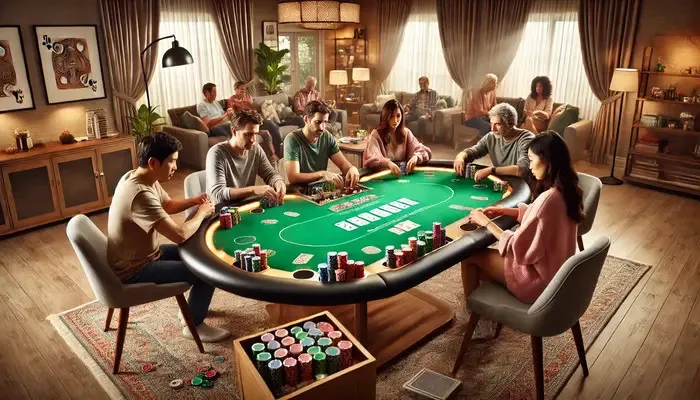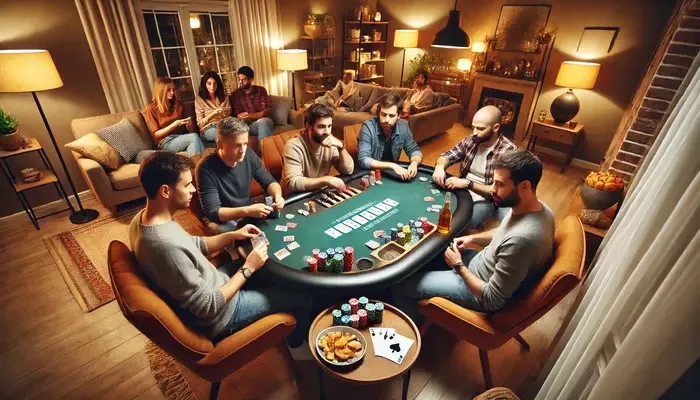
How to Organize a Home Poker Tournament: Step by Step
Hosting a home poker tournament is a fantastic way to gather friends, enjoy a competitive game, and create memorable experiences. With the right preparation and structure, you can ensure everyone has a great time and the tournament runs smoothly. Here’s a comprehensive guide to organizing a successful home poker tournament.
Preparation for the Tournament
To start, you need to plan the basics of your poker tournament. This includes determining the number of players, setting a date and time, and deciding on the type of poker game you’ll play. Texas Hold’em is a popular choice for home games due to its simple rules and widespread appeal. Inform your friends in advance to ensure maximum participation.
Determine the Number of Players: Ideal home tournaments usually consist of 6-10 players. This ensures a lively game without being overcrowded.
Set the Date and Time: Choose a date and time that suits most of your invitees. Weekends are typically preferred.
Game Type and Buy-In: Decide whether you’ll play a cash game or a tournament style. Set a reasonable buy-in amount that everyone is comfortable with.
Purchase of Equipment and Materials
For a professional feel, invest in quality poker equipment. The essentials include:
- Poker Chips: A set with different denominations will make the game smoother.
- Playing Cards: Have at least two decks to rotate during the game.
- Dealer Button and Timer: These help in keeping track of the game flow and blind levels.
- Table and Chairs: A spacious table with comfortable seating is crucial. Consider a foldable poker table top if you don’t have a dedicated poker table.
Preparing the Space
Creating the right environment is key to a great poker night. Here’s how to prepare your space:
- Seating Arrangement: Ensure there’s enough space for players to sit comfortably and place their drinks and snacks.
- Lighting: Proper lighting is essential so players can see their cards clearly. Avoid harsh overhead lights in favor of softer, focused lighting.
- Ambiance: Background music can enhance the atmosphere. Choose instrumental or soft tunes that won’t distract from the game.
- Refreshments: Stock up on snacks and drinks. Offer a mix of finger foods and beverages to keep everyone satisfied throughout the night.

Tournament Rules and Structure
Setting clear rules and structure helps prevent disputes and keeps the game enjoyable.
Blind Structure: Plan a blind structure that matches the expected duration of your tournament. A common structure is to increase blinds every 15-20 minutes.
Starting Stack: Allocate a starting stack of chips for each player. A standard starting stack might be 1,500 to 5,000 chips.
Payout Structure: Decide on the payout structure before the game begins. A typical structure might reward the top 3 players, with the winner receiving the largest share.
House Rules: Establish any house rules such as betting limits, rebuys, and breaks. Make sure all players are aware of these rules before the tournament starts.
Holding the Tournament
Now that everything is set, it’s time to host your tournament. Follow these steps to ensure it runs smoothly:
- Welcome and Briefing: Welcome your guests and give a brief rundown of the rules, blind structure, and any house rules.
- Seat Assignment: Use a random method to assign seats to ensure fairness.
- Starting the Game: Begin the game at the designated time. Make sure to rotate the dealer role regularly if you don’t have a dedicated dealer.
- Managing the Tournament: Keep track of the blind levels and announce increases. Ensure everyone is aware of the current blinds and time remaining until the next increase.
- Handling Eliminations: When players are eliminated, guide them to a secondary activity or provide a space where they can relax and watch the game.
Organizing a home poker tournament requires careful planning and preparation, but the payoff is a night of fun and camaraderie. By following these steps, you’ll create an enjoyable and memorable poker experience for all your guests. Whether you’re a seasoned player or a first-time host, these guidelines will help you manage a successful tournament. Happy playing!



